Perched on a hill in Tuscany’s stunning Val d’Orcia, Pienza is a small village with a big reputation. My first visit to this UNESCO World Heritage Site left me speechless. The panoramic views stretch across the Tuscan countryside, but the incredible gastronomic treasure this town holds also amazed me. Pienza’s pecorino cheese stands as one of Italy’s most celebrated culinary treasures, crafted using traditional methods that have remained unchanged for centuries.
Walking through Pienza’s charming streets, I discovered artisan shops at every turn offering various ages of pecorino, from fresh and mild to aged and sharp. The cheese’s rich flavor comes from the sheep grazing on the unique herbs and grasses of the Val d’Orcia. This special diet creates a distinctive taste that you simply can’t find anywhere else in the world.
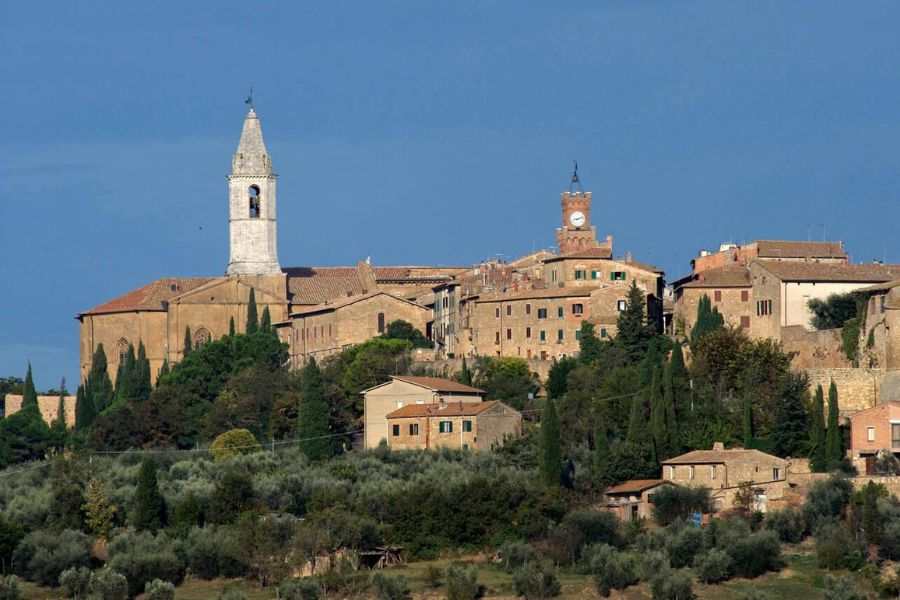
The beauty of Pienza goes beyond its famous cheese. This Renaissance “ideal city” features perfectly preserved architecture and was even chosen by director Franco Zeffirelli as a filming location for Romeo and Juliet. I found myself constantly torn between admiring the town’s incredible vistas and sampling the endless varieties of pecorino. Trust me – you’ll want to do both when you visit this Tuscan gem.
The Heart of Tuscan Gastronomy
Pienza’s culinary landscape represents the soul of Tuscan food traditions, blending rustic simplicity with remarkable flavor. The region’s gastronomic identity is built around authentic ingredients and time-honored techniques.
Pienza’s Love Affair with Pecorino Cheese
Walking through Pienza, I couldn’t miss the distinct aroma of Pecorino wafting from the many cheese shops lining the Renaissance streets. This isn’t just any cheese – Pecorino di Pienza is made from 100% ewe’s milk (pecora means “sheep” in Italian) and boasts a distinctive flavor that captures the essence of the Val d’Orcia landscape.
I discovered that aging transforms this cheese dramatically. The fresh varieties offer mild, creamy profiles, while aged versions develop complex, nutty characteristics. Local shop owners proudly explained that their sheep graze on the region’s herb-rich pastures, contributing to the cheese’s unique taste.
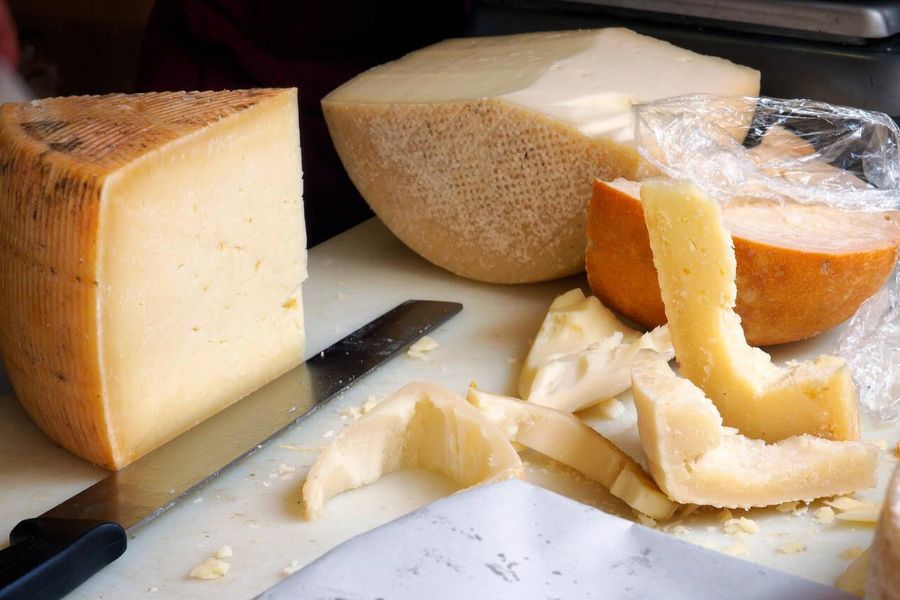
Many shops offer tastings where you can sample different aging periods. Don’t hesitate to ask for recommendations – pairing Pecorino with local honey creates a flavor explosion that still lingers in my memory!
Culinary Crafts in Val d’Orcia
Beyond cheese, my exploration of Pienza revealed a world of Tuscan culinary treasures. The humble yet extraordinary pici pasta stands out as a must-try regional specialty. This handmade pasta, crafted simply from water and flour, becomes transcendent when paired with rich Chianina meat sauce.
The surrounding Val d’Orcia countryside supplies Pienza with exceptional ingredients. Local olive oils, with their peppery finish, elevate even the simplest dishes. Rustic breads pair perfectly with the region’s cured meats.
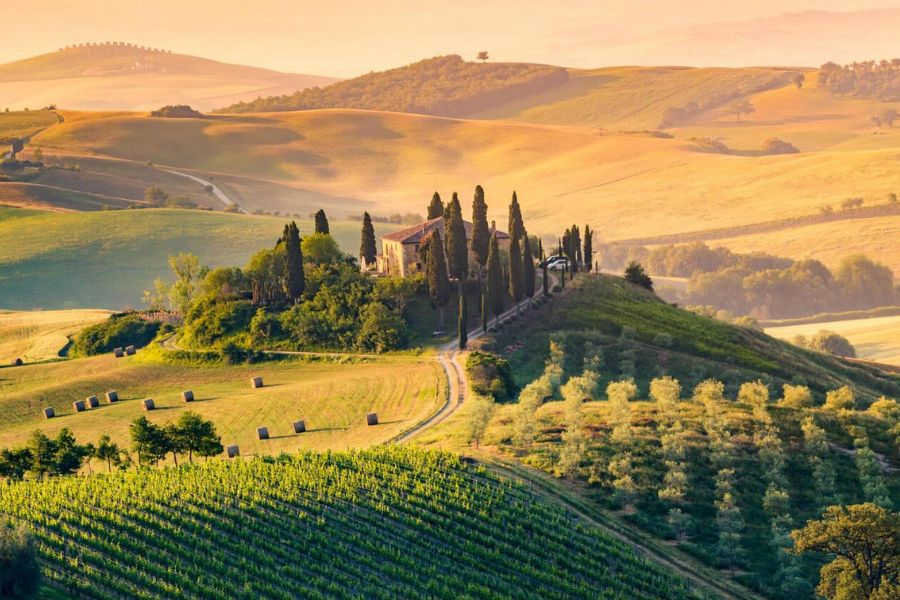
I found that dining in Pienza feels deeply connected to place. Many restaurants showcase panoramic views of the countryside, creating meals where landscape and flavor intertwine. The seasonal cooking reflects agricultural rhythms that have defined Tuscan gastronomy for centuries.
The Architectural and Cultural Tapestry of Pienza
Pienza stands as a masterpiece of Renaissance urban planning, where beautiful architecture meets breathtaking landscapes. The village’s perfectly preserved buildings and streets tell stories of artistic vision and cultural significance.
The Renaissance City’s Allure
Walking through Pienza feels like stepping into a perfect painting. The town was transformed in the 15th century by Pope Pius II, who wanted to create an “ideal city” based on humanist principles. I’m always struck by how the main square, Piazza Pio II, brings together the cathedral and Palazzo Piccolomini in perfect harmony.
The charming streets have such playful names like Via dell’Amore (Love Street) and Via del Bacio (Kiss Street). These narrow lanes are where Zeffirelli filmed scenes from his famous “Romeo and Juliet,” capturing the romantic essence of the town.
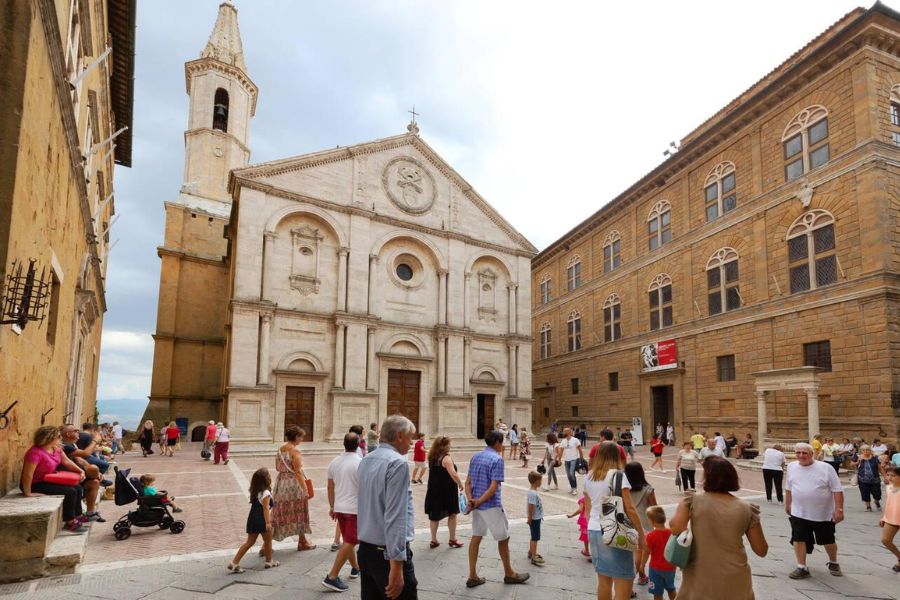
What makes Pienza special is how its buildings frame views of the Val d’Orcia. Artists, photographers, and filmmakers continue to be drawn to these perfectly composed vistas.
Exploring a UNESCO World Heritage Site
Pienza earned its UNESCO status as a perfect example of Renaissance urban planning. When I explore the town, I’m experiencing a revolutionary concept of city design that influenced architecture throughout Europe.
The Cathedral showcases the Renaissance ideal of light and space, with large windows that illuminate the interior in ways that were innovative for its time. Palazzo Piccolomini features one of Italy’s earliest hanging gardens, offering stunning panoramic views of Monte Amiata and the valley below.
Beyond the main attractions, I love discovering smaller architectural details that make Pienza special: decorative doorways, elegant stone carvings, and graceful arches.
Artists and creative minds still flock here, finding inspiration in the same perfect proportions and magical atmosphere that have defined Pienza for centuries.
Breath-taking Panoramic Views and Vistas
Pienza offers some of the most spectacular views in all of Tuscany. From the city walls to dedicated viewpoints, the landscape unfolds like a painting that changes with the seasons.
Visual Feasts of the Orcia Valley
When I visited Punto Panoramico in Pienza, I was completely speechless. The view stretches across the entire Val d’Orcia, with rolling hills that seem to go on forever. This UNESCO-protected landscape is particularly stunning in early morning or just before sunset when the light casts long shadows across the countryside.
From the southern edge of Pienza, I could see the iconic cypress-lined roads that wind through golden fields. In spring, these same views transform with vibrant green hills and wildflowers.
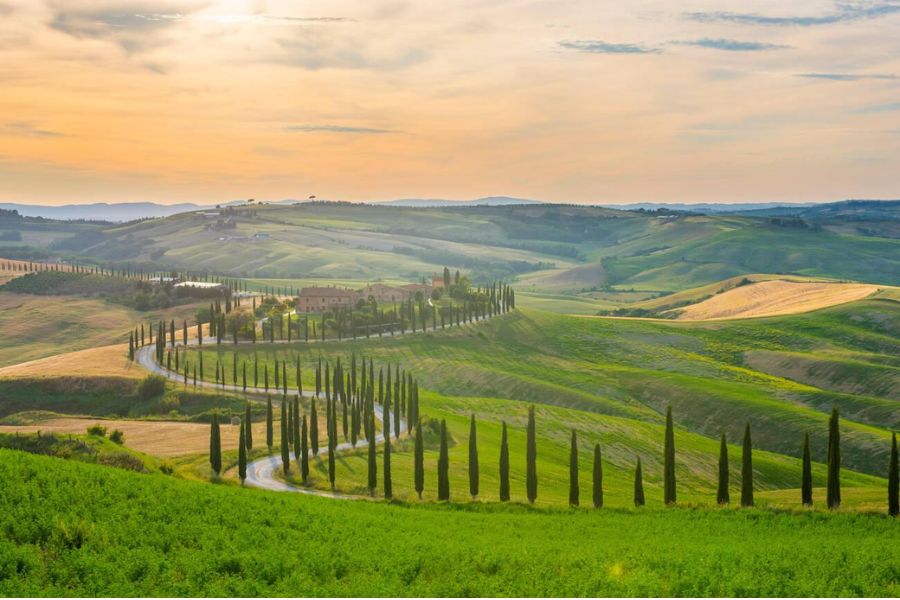
The most famous viewpoint is along the city walls near Piazza Dante Alighieri. I spent hours here, watching the mist rise from the valley in the morning. The panorama includes views toward Montalcino in the distance, famous for its Brunello wines.
Discovering the Italian Countryside
I rented a bicycle to explore beyond Pienza’s walls. The gentle hills of the countryside revealed hidden farmhouses and ancient olive groves that dot the landscape.
The road between Pienza and San Quirico d’Orcia offered breathtaking vistas at every turn. I stopped often to photograph sheep grazing in fields where the famous Pecorino cheese begins its journey.
For the best experience, I recommend visiting in late April or October when fewer tourists crowd the viewpoints. The changing seasons bring different colors to the landscape – golden in summer, lush green in spring, and rusty reds in fall.
From Pienza, day trips to nearby Montalcino provide different perspectives of the valley. The fortress town sits higher, offering sweeping views that complement what you’ll see in Pienza.
The Richness of Local Wine Culture
Tuscany’s wines complement Pienza’s famous pecorino cheese perfectly, creating food pairings that highlight the region’s agricultural excellence. The rolling hills surrounding this Renaissance gem nurture some of Italy’s most celebrated vineyards.
Savoring Brunello di Montalcino
When I visited the vineyards near Pienza, I discovered why Brunello di Montalcino is considered one of Italy’s finest wines. This ruby-red treasure comes from vineyards just 15 kilometers from Pienza in the medieval town of Montalcino.
The wine’s intense flavor develops from aging at least five years, with two years in oak barrels. During my tasting tours, local producers explained how the region’s unique climate and soil create the perfect conditions for the Sangiovese grapes.

What makes Brunello special is its complex character – notes of cherry, leather, and spice that evolve beautifully with age. I found it pairs wonderfully with Pienza’s aged pecorino, creating a truly authentic Tuscan experience.
A Journey Through Local Wineries
My exploration of Pienza’s wine culture took me to family-run estates where traditions pass down through generations. Many wineries welcome visitors for tours that include walks through sun-drenched vineyards and tastings in cool stone cellars.
Beyond Brunello, I discovered Rosso di Montalcino (Brunello’s younger sibling) and the elegant Vino Nobile di Montepulciano from nearby hills. These wines offer excellent value while still delivering remarkable quality.
What struck me most was the passion of local winemakers. They eagerly share stories about harvest seasons and the art of winemaking while pouring generous samples of their craft.
Most wineries require reservations, especially during summer months. I recommend planning a half-day tour that includes 2-3 vineyards to fully appreciate the diversity of Tuscan wines without rushing the experience.
Essential Experiences and Activities in and around Pienza
Pienza offers visitors a perfect blend of cultural immersion and gastronomic adventures. The Renaissance town sits at the heart of Val d’Orcia, where rolling hills create a backdrop for unforgettable food experiences.
Cheese Tasting Like a Local
When in Pienza, I always make pecorino tasting my top priority. This sheep’s milk cheese is the crown jewel of local gastronomy and varies from fresh and mild to aged and sharp. I recommend visiting Il Cacio di Ernello or La Bottega del Naturista where friendly shopkeepers offer generous samples.
Don’t miss the opportunity to try:
- Pecorino fresco (young, mild version)
- Pecorino stagionato (aged 6+ months)
- Pecorino al pepe nero (with black pepper)
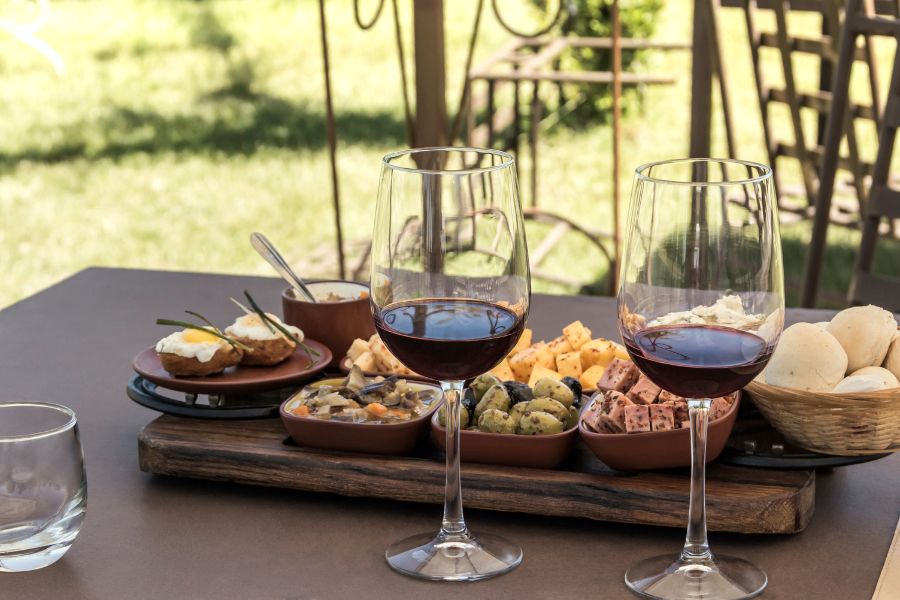
The best part? Many shops will vacuum seal your purchases for the journey home. I’ve found early mornings are perfect for tasting, when shops are less crowded and owners have more time to share the stories behind their cheeses.
Wine Tours and Other Culinary Adventures
Beyond cheese, the surrounding countryside beckons with vineyards producing exceptional wines. I’ve taken half-day tours to nearby wineries like Tenuta Fanti and Ciacci Piccolomini. At these wineries, Brunello and Rosso di Montalcino steal the show.
Tours typically include:
- Vineyard walks
- Cellar visits
- Guided tastings
- Pairings with local products
For a complete culinary experience, I recommend booking a cooking class. Learning to make pici pasta (thick hand-rolled spaghetti) with a local nonna was one of my most cherished memories. The class ended with a feast overlooking those iconic Tuscan hills.

Many local wineries also offer olive oil tastings. The peppery finish of authentic Tuscan olive oil drizzled over fresh pecorino is a simple pleasure that perfectly captures the essence of Pienza’s gastronomy.

